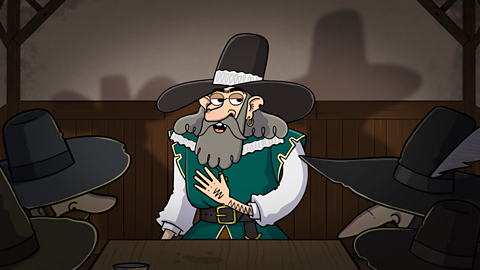Why did people want to reach the South Pole?
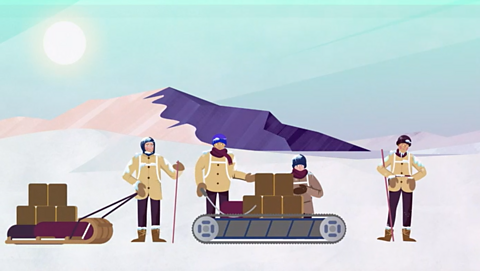
- The North Pole was reached for the first time in 1909.
- In the same year, explorer Ernest Shackleton got as close as 100 miles from the South Pole.
- Afterwards, British and Norwegian explorers set off to get even closer.
This is Captain Robert Falcon Scott.
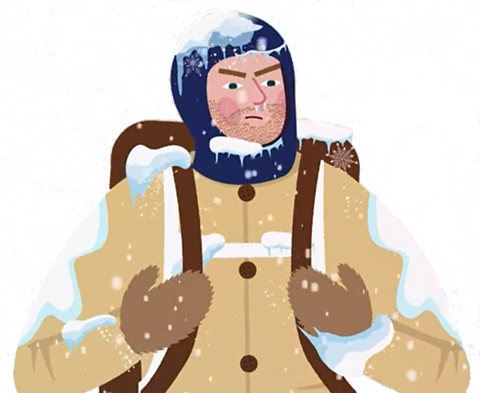
- He was a famous British explorer and Royal Navy captain.
- In 1910 he led an expedition (a big journey) to the South Pole.
- He tried to get there before Norwegian explorer Captain Roald Amundsen.
- However the Norwegian explorers reached the South Pole first.
Watch: Robert Falcon Scott's journey to the South Pole
FATIMA: Who shall we look up today?
OLLIE: What about an explorer who went to the South Pole?
FATIMA: Okay, sounds good. Holo-Lab, can we meet an explorer who went to the South Pole?
HOLO-LAB: Searching. Searching… Found. An explorer who went to the South Pole, Robert Falcon Scott.
FATIMA: Hi, Mr Scott, I’m Fatima.
OLLIE: And I’m Ollie.
ROBERT SCOTT: How do you do, Fatima? How do you do, Ollie? I’m Robert Falcon Scott. I set out in 1911 to be the first person to reach the South Pole. I knew that Ernest Shackleton and Roald Amundsen, a Norwegian explorer, also wanted to get their first. The race was on.
FATIMA: That sounds exciting.
ROBERT SCOTT: And dangerous.
OLLIE: What happened?
ROBERT SCOTT: We left Cardiff on a ship called the Terranova, in June 1910, with everything I needed for the expedition. We had problems right away. It was so incredibly cold; the equipment we brought with us wouldn’t work and the ponies couldn’t cope either.
OLLIE: What did you do?
ROBERT SCOTT: We struggled on, the dogs pulling our sledges through awful weather and across difficult terrain. By the middle of winter, it was too cold even for the dogs so they turned back, leaving only five of us: myself, Wilson, Oates, Bowers and Evans, to make the final push to the South Pole.
FATIMA: Wow! So there were only five of you, alone on all that ice?
OLLIE: And you had no way to call anyone? No radio, nothing?
ROBERT SCOTT: That’s right, we had no way to communicate at all and had no choice but to continue on the trek south. Finally, on the 17th January 1912, we arrived at the South Pole.
FATIMA: So you were the first to get there!
ROBERT SCOTT: Well, no. We saw the Norwegian flag flying and realised that Amundsen had beaten us. He had already arrived there on the 14th December.
OLLIE: Oh no!
ROBERT SCOTT: Indeed. Now we faced the 800 mile journey back, knowing that we hadn’t been the first to get to the pole.
FATIMA: That must’ve been terrible for you.
ROBERT SCOTT: Quite. It got even worse. The temperature suddenly dropped to -40°C. That’s 45 degrees colder than the average winter temperate in the UK. Despite our insulting clothes made of canvas, wool and reindeer fur, the weather had become so extreme that it was hard to move. This slow progress also meant we didn’t have enough food.
FATIMA: What happened?
ROBERT SCOTT: We lost Evans in mid-February. By March, Oates was very badly frostbitten and could not move very fast. Fearful he was holding us up, he bravely sacrificed himself in the hope we would survive.
OATES: I’m just going outside. I may be some time.
ROBERT SCOTT: Our expedition ended on the 29th March 1912. We were just twenty kilometres from a supply depot. I left a letter for my wife.
OLLIE: What did you say to her?
ROBERT SCOTT: I told my wife that I loved her and had no regrets about my journey. How it is better to have tried and failed than never to have tried at all. And although we didn’t make it back, we had the spirit to try. We took risks. Luck didn’t come our way but we were determined to do our best. That’s the most important thing. Go out there and follow your dreams. I wish you all the very best of luck with whatever you choose to do in life.
OLLIE: Wow! What an amazing person!
FATIMA: I want to be a brave explorer.
How did the teams reach the South Pole?
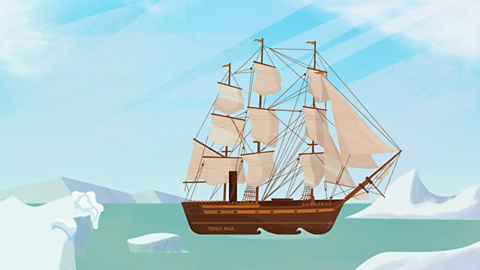
- Captain Amundsen and his team set off for the South Pole on 20th October 1910.
- He used expert dog-teams and skiers.
- Captain Scott started his journey on 1st November 1910.
- Scott used sledges and ponies.
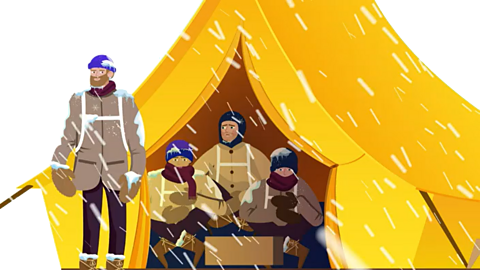
- Amundsen arrived at the South Pole on 15th December 1911. They then made it home safely.
- Scott arrived at the South pole on 17th January 1912. This was 33 days after Amundsen's team.
- Scott's team were disappointed they had been beaten.
- On the way home, Scott and his team died from the cold.

Did you know?
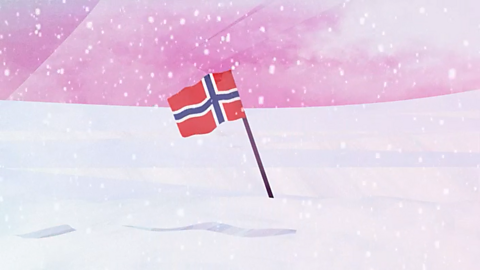
- Captain Scott wrote a diary about his travels.
- You can see some of his writing and photographs at Cambridge University's Polar Museum.
Activity: Quiz – Race to the South Pole
BBC Bitesize newsletter. External Link
Sign up to our BBC Bitesize newsletter to receive monthly news, stories and updates on latest Bitesize content.

More on Events beyond living memory
Find out more by working through a topic
- count5 of 6
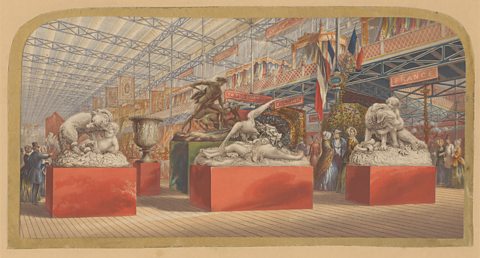
- count6 of 6

- count1 of 6
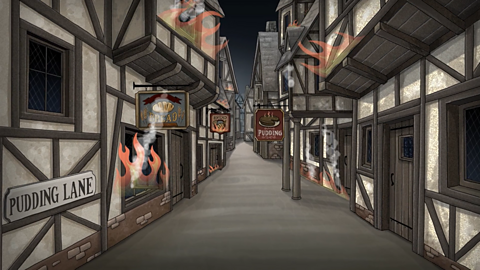
- count2 of 6
